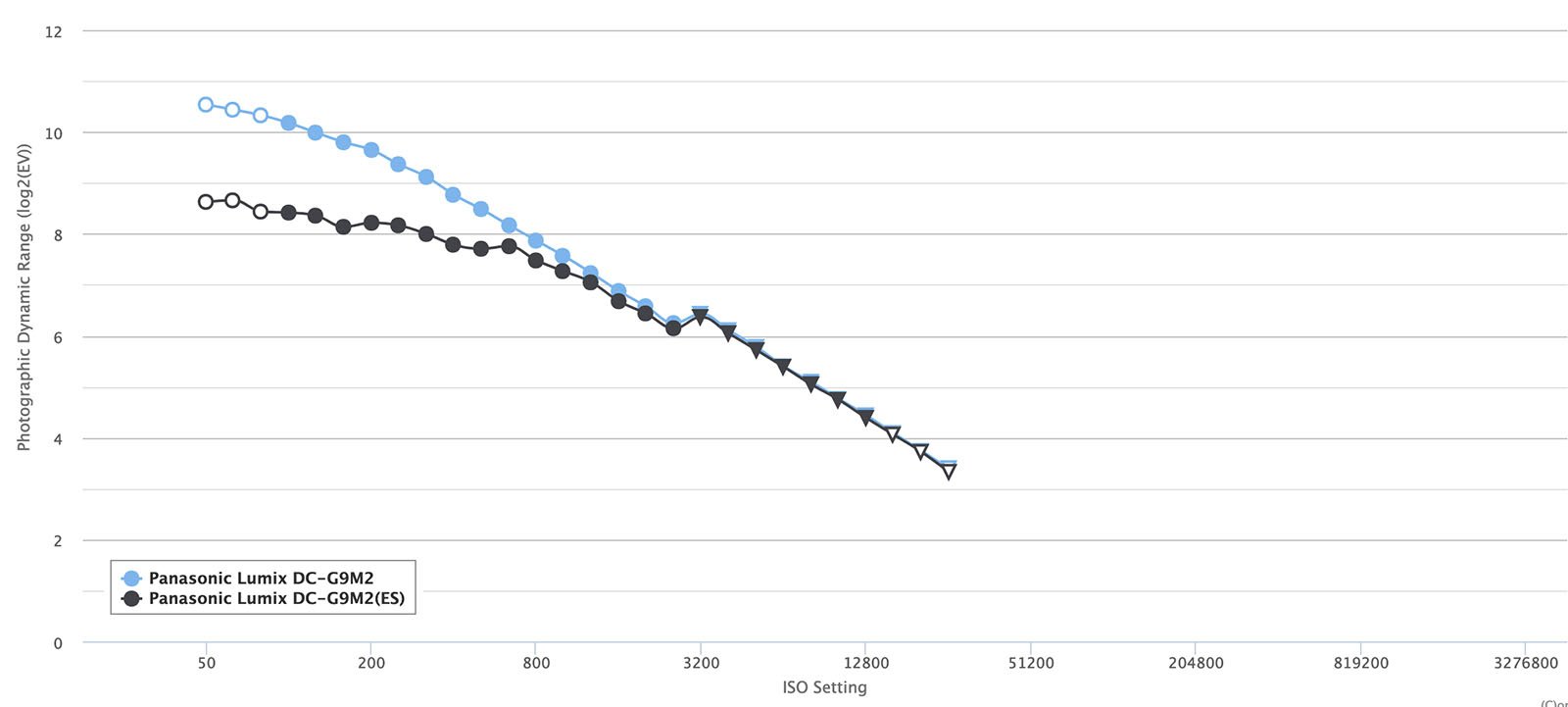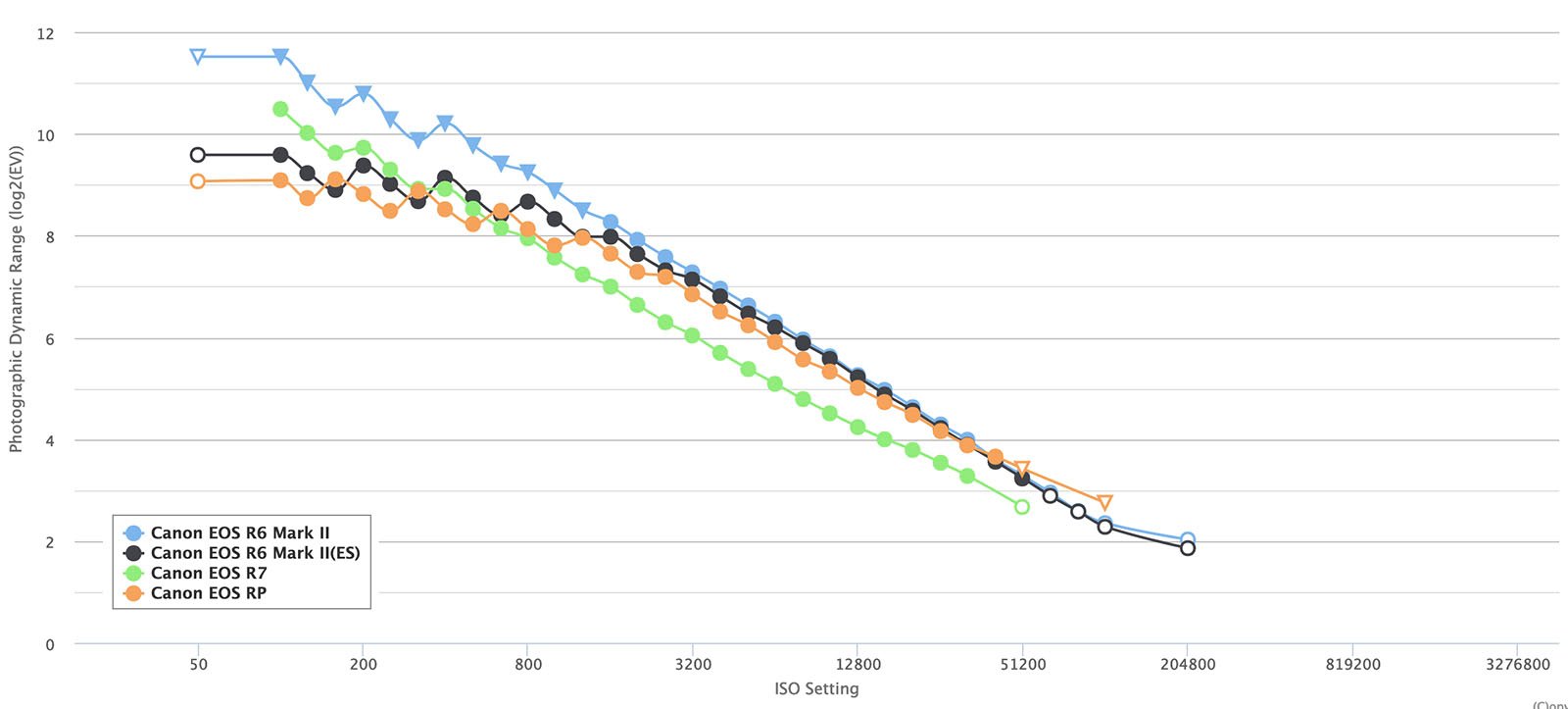William “Bill” Claff of Photons to Photos recently added numerous cameras to his fantastic and vast library of photographic dynamic range tests, including the Panasonic Lumix G9 II.
The G9 II shows a significant rift in dynamic range performance between its mechanical shutter and its electronic shutter.
At its base native ISO setting of 100 — an impressively low threshold for a Micro Four Thirds camera — the G9 II’s maximum dynamic range using the mechanical shutter is 10.18 EV. With the electronic shutter at ISO 100, it is instead 8.42 EV.
The gap between the mechanical and electronic shutter persists until around ISO 3200, although the gap generally shrinks as the ISO approaches this point.

1.76 EV of dynamic range can matter a lot, especially when photographers are trying to extract as much performance as possible from their cameras. 1.76 EV is larger than the difference between the full-frame Nikon Df DSLR and the APS-C D90 DSLR, for example. It’s also a full stop greater of a difference in dynamic range than the Sony a7R V versus the Sony a6700.
It touches on something important that often goes unnoticed: generally speaking, there can be a difference in maximum dynamic range, and thus image quality, when using a camera’s electronic shutter option.
There are exceptions, like the Sony a7R III and Nikon D850, but cameras like the Fujifilm X-H2S also demonstrate a dynamic range cost to using the electronic shutter. In that case, the difference is a third of a stop, but that third of a stop can matter in extremely demanding scenarios.
Of course, an electronic shutter has benefits. These days, a camera’s maximum shooting speeds are almost always limited to use with the electronic shutter. The X-H2S tops out at 15 frames per second with its mechanical shutter and a much-faster 40 fps with its electronic shutter, which also promises no blackout. Electronic shutters almost invariably unlock faster shutter speed options, too, eclipsing the 1/8,000s (or 1/4,000s) cap to nearly all mechanical shutters.
Consider the Canon EOS R6 Mark II, another new mirrorless camera that demonstrates a dynamic range difference depending on the shutter selection. It’s a fantastic camera, and it’s very fast when using its electronic shutter, but users lose nearly a full stop of dynamic range when using the electronic shutter. It doesn’t quite bring the R6 II down to EOS RP territory, but it’s not far off. The R6 II’s electronic shutter does make the full-frame camera perform worse than Canon’s best APS-C mirrorless camera though, the EOS R7.

Of course, some cameras don’t have mechanical shutters at all, like the Nikon Z8, Z9, and new Sony a9 III. The Z7 II and Z9, for example, are both 45.7-megapixel full-frame cameras. Despite being less expensive, the Z7 II does best the Z9 (and Z8) when it comes to dynamic range performance by up to a third of a stop. That may be chalked up to more than just the Z7 II’s mechanical shutter, though, as the Z8/Z9 also implement a stacked sensor design. It’s not a perfect apples-to-apples comparison.
The primary takeaway is that the G9 II, which has really impressive image quality for a Micro Four Thirds camera, is significantly worse when using its electronic shutter. This pattern carries over to some other cameras of all sensor sizes, too. Photographers should be aware that when they don’t require the benefits of the electronic shutter (more speed, shorter exposures, or silent shooting) and care about image quality, the mechanical shutter is often the best option. Sometimes it’s the best choice by a significant margin.
Image credits: Header photo licensed via Depositphotos.
